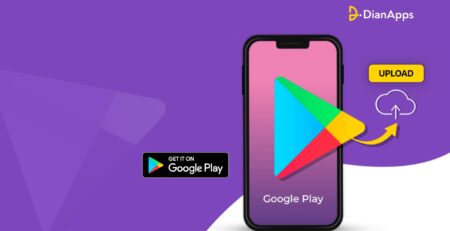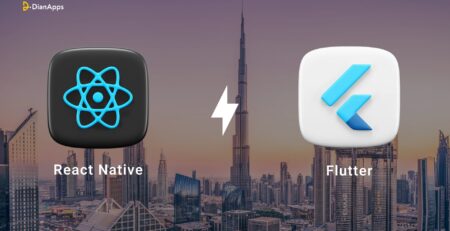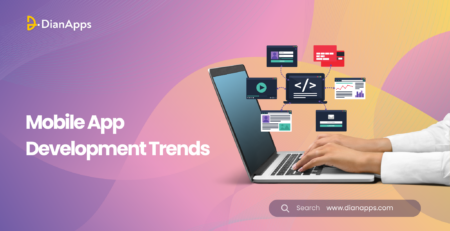What do you expect from Flutter 4.0: New and Improved
With the past 3.10 version’s success. Flutter– The UI toolkit is all set to launch its newest 4.0 version in the market soon. However, there is no mention of it on Flutter’s official site. Tech experts predict that this release will bring some more extraordinary features and updates to the app-building industry.
From releasing its very first version in 2018, till now, the mobile/web app development framework has come very far and has also grown exponentially well.
Flutter 4.0 is expected to enhance the web, mobile graphics, security, and whatever else. In this blog post, we will encounter some of the most exciting enhancements coming with 4.0.
But first, let’s summarize the past Flutter app development releases to observe the changes more closely.
We will be focusing on only the important versions here! Versions that made an impact in the market of mobile app development services.
Previous Flutter Versions { The Summery }
-
Flutter 1.2 –
Introduced Dart 2.2 with significant performance improvements and new language features. As well as new widgets, tools, and enhancements for Android Studio and Visual Studio Code.
-
Flutter 1.22 –
Introduced several new features, including enhanced support for Material Design, new iOS and macOS widgets, new performance tools, and the release of Flutter for Windows.
-
Flutter 2.0 –
A major release that included a number of significant improvements. Such as enhanced support for desktop and web development, a new sound null safety feature. And improvements to the Flutter tooling ecosystem.
-
Flutter 2.2 –
Introduced new features like a new backend for the web, new payment integrations, and improved support for Windows and macOS. Get an in-depth summary of Flutter’s 2.2 version here!
-
Flutter 3.0 –
New additions and enhancements featured in one of the most popular updates included better support for both desktop and web development, a new low-level rendering API, additional animation capabilities, places for improving graphic features, and increased support for the Flutter tools ecosystem. Furthermore, Flutter 3.0 brought with it the capability to create AR and VR experiences with Flutter, supporting OpenXR for desktop and VR devices and ARCore and ARKit for mobile devices. With this release, the versioning method was changed to one where major versions would now be issued every six months rather than annually, allowing the framework to innovate at a quicker rate.
-
Flutter 3.3 –
Improved support for the web platform, additional animation and visual capabilities, and improvements to the Flutter app development services and tools ecosystem are among the new features included in this release.
-
Flutter 3.7 –
New features included in this release included enhanced language and accessibility support, new layout construction APIs, and improvements to the Flutter tools environment. Check out our prior written blog post to learn more about the Flutter 3.7 version in detail.
-
Flutter 3.10 –
The Flutter’s 3.10 version was an amalgamation of new accessibility features, extended versions of custom layout development options, better localization, engines, and tools.
Future Prediction For Flutter’s 4.0 Features
Based on past releases of Flutter and trends in the industry, there are some potential features that could be added in future versions of the framework. Some possible key features of Flutter 4.0 could include:
Improved performance:
Flutter has come very far due to its rich features and rendering capabilities, in its 4.0 version, Flutter is expected to improve the its engines for faster and effective app performance. Keep reading about rendering webpages using Flutter webview to understand its usefulness and the ability to build a website from scratch.
Improvement in accessibility:
4.0 also may observe some fantastic new API features or enhanced accessibility of an application to make the user experience easier to use by the audience.
Upgraded UI/UX components:
You can encounter new or updated UI/UX components that make it easier for developers to create modern, visually stunning apps with the framework.
Third-Party Integration Services
What’s more interesting about this latest realise is its new tools used to make the life of a developer easier and integrates third-party services and plugins including social media channels or cloud services.
Bonus read: Top 10 Flutter app development tools to use!
Better security features:
New security features or improvements to existing security measures may be seen in the 4.0, making it easier for developers to build secure apps.
Increased support for desktop and web platforms:
Flutter has been expanding its support for desktop and web platforms in recent releases, and this trend may continue in Flutter 4.0 with new features or improvements for these platforms.
“Note: These are just potential features that could be included in future versions of Flutter, and we will have to wait for official release notes to know for sure what Flutter 4.0 will bring to the table.”
Advantages of Using Flutter for App Development
Faster development cycles:
Flutter’s hot-reload feature allows developers to make changes to their code and see them instantly reflected in their app, without the need for a time-consuming rebuild and deploy cycle. This can lead to faster development cycles and quicker iterations.
Reduced development costs:
With the ability to create cross-platform apps with a single codebase. Flutter app development toolkit can help reduce the time and cost associated with developing separate apps for different platforms. Such as iOS and Android.
Easier maintenance and updates:
The framework’s modular architecture and reactive programming model can make it simpler for developers to maintain and update their apps over time, as changes made to one part of the app are automatically propagated throughout the entire codebase.
Improved cross-platform development:
You can also expect to observe Flutter’s support for multiple platforms, including mobile, desktop, and web, allowing Flutter app developers to create consistent experiences across all of them using a single codebase. This can help reduce development time and costs while also improving the user experience.
Read what makes Flutter the best option for cross-platform app development!
Better performance and user experience:
Flutter’s use of a reactive programming model, combined with its highly optimized rendering engine. That can result in apps that are fast, responsive, and provide a smooth user experience across all supported platforms.
What to Expect From The Upcoming 4.0 Version
Well, Flutter releases are significant because they often introduce new features, improvements, and bug fixes. That make it easier and more powerful for developers to create high-quality apps across a range of platforms.
Major releases, such as Flutter 3.0, also often mark significant milestones in the evolution of the framework, such as the introduction of new platform support, major improvements to performance or tooling, or the adoption of new industry standards or best practices.
As for Flutter 4.0, it is possible that it could be a future major release. That introduces significant new features and improvements to the framework. Although this has not been officially announced by the Flutter team at the time as per the sources.
If and when Flutter 4.0 releases, it will likely be significant for developers. Who use the framework and may bring new opportunities and capabilities for building apps across a range of platforms.
Wrapping Up
While there is no official release of Flutter 4.0 at this moment. Based on past releases of Flutter, we can expect that it will introduce new features and capabilities. That will improve the performance, accessibility, and cross-platform development capabilities of the framework.
Some of the key features and advantages of Flutter 4.0 could include. Improved performance, enhanced accessibility, upgraded UI/UX components, improved integration with third-party services. Better security features, and increased support for desktop and web platforms.
As mobile app developers, we should be excited to adopt Flutter 4.0 when it becomes available, as it will help us create better apps with faster development cycles, reduced development costs, easier maintenance and updates, and improved user experience. By hiring an experienced Flutter app development company and understanding the new features and capabilities of Flutter 4.0, implementing it into our app development process, leveraging its advantages to improve our workflow, and enhancing our app’s performance and user experience, we can stay competitive and provide the best possible experience for our users.
What’s More for 4.0?
Looking ahead, we can expect Flutter 4.0 to continue to evolve and improve. With the Flutter team regularly releasing updates and new features. That push the boundaries of what is possible with app development. With its growing community, powerful features, and cross-platform capabilities. Flutter 4.0 has the potential to revolutionize the way we approach app development. And we should be excited to be a part of this rapidly evolving ecosystem.




